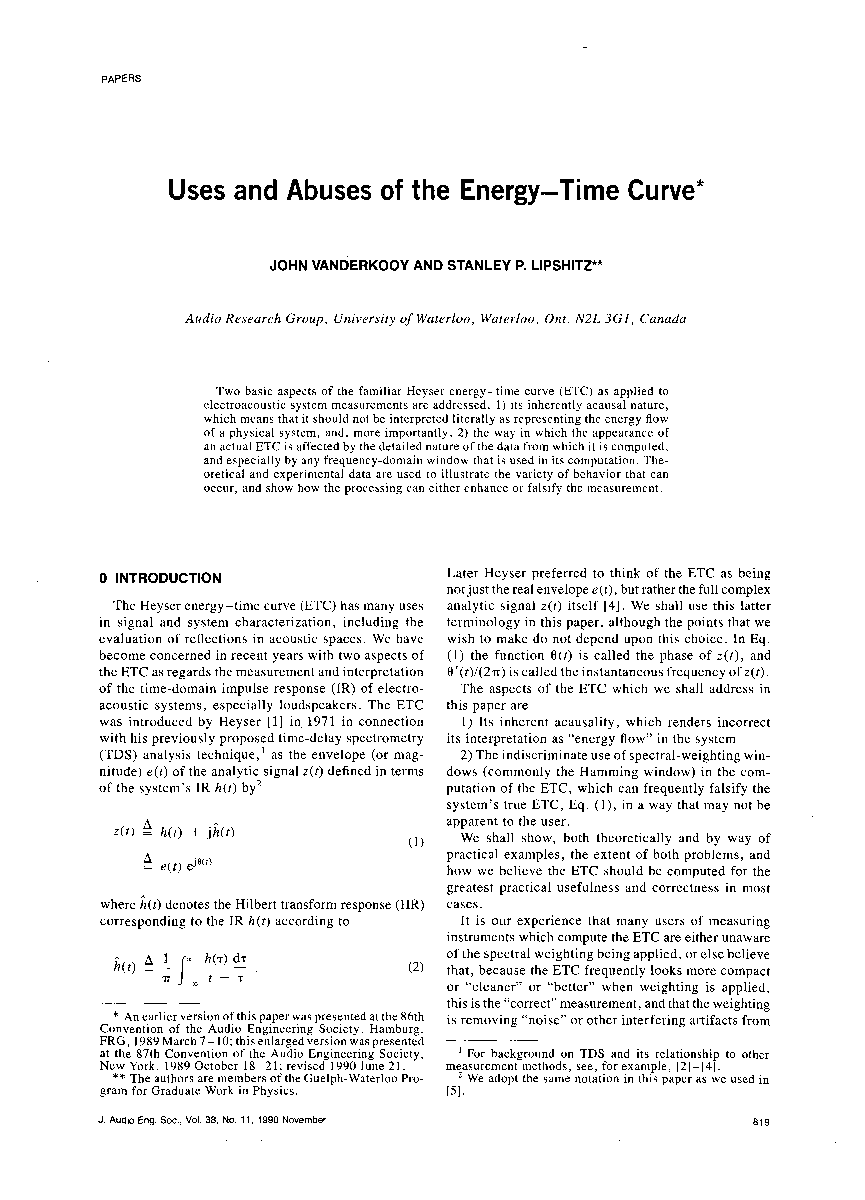Home / Publications / E-library page
You are currently logged in as an
Institutional Subscriber.
If you would like to logout,
please click on the button below.
Home / Publications / E-library page
Only AES members and Institutional Journal Subscribers can download
Two basic aspects of the familiar Heyser energy-time curve (ETC) as applied to electroacoustic system measurements are addressed, 1) its inherantly acausal nature, which means that it should not be interpreted literally as representing the energy flow of a physical system, and, more importantly, 2) the way in which the appearance of an actual ETC is affected by the detailed nature of the data from which it is computed, and especially by any frequency-domain window that is used in its computation. Theoretical and experimental data are used to illustrate the variety of behavior that can occur, and show how the processing can either enhance or falsify the measurement.
Author (s): Vanderkooy, John; Lipshitz, Stanley P.
Affiliation:
Audio Research Group, University of Waterloo, Waterloo, Ont., Canada
(See document for exact affiliation information.)
Publication Date:
1990-11-06
Import into BibTeX
Permalink: https://aes2.org/publications/elibrary-page/?id=6007
(1378KB)
Click to purchase paper as a non-member or login as an AES member. If your company or school subscribes to the E-Library then switch to the institutional version. If you are not an AES member Join the AES. If you need to check your member status, login to the Member Portal.

Vanderkooy, John; Lipshitz, Stanley P.; 1990; Uses and Abuses of the Energy-Time Curve [PDF]; Audio Research Group, University of Waterloo, Waterloo, Ont., Canada; Paper ; Available from: https://aes2.org/publications/elibrary-page/?id=6007
Vanderkooy, John; Lipshitz, Stanley P.; Uses and Abuses of the Energy-Time Curve [PDF]; Audio Research Group, University of Waterloo, Waterloo, Ont., Canada; Paper ; 1990 Available: https://aes2.org/publications/elibrary-page/?id=6007